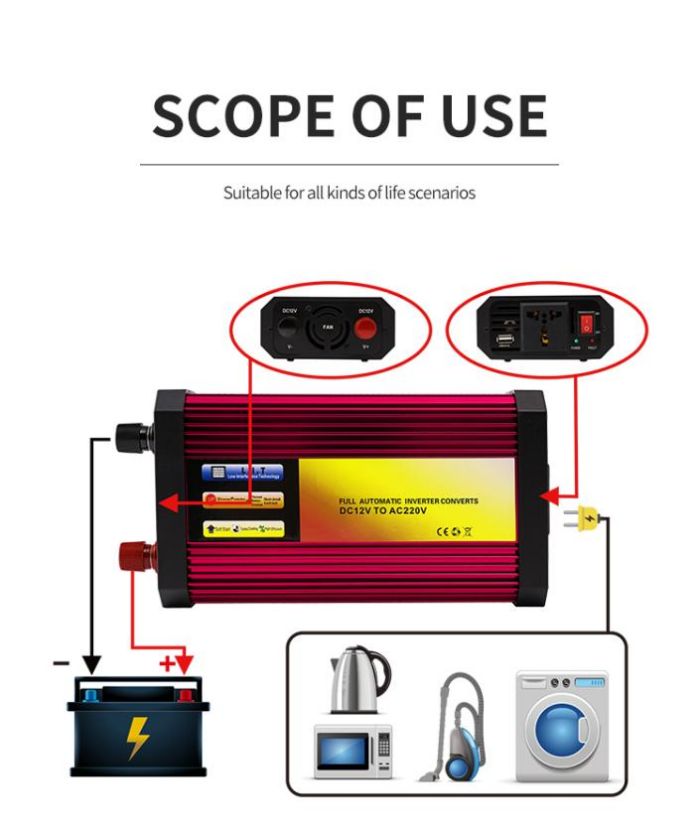What is a Car Inverter?
A car inverter, also known as a power inverter, is an electronic device that converts DC (direct current) power from a car battery to AC (alternating current) power, which is the type of power used by most household appliances and electronics.
Car inverters typically have a 12V DC input from the car battery and provide a 120V AC output, allowing you to power and charge devices such as laptops, smartphones, tablets, cameras, small appliances and other electronics while on the move.
Car inverters are often used for road trips, camping, long drives or any situation where you need to power devices that require AC power but don’t have access to a standard electrical outlet. They often come with sockets, such as standard AC sockets or USB ports, to accommodate different types of devices.
It’s important to note that car inverters have power limitations based on the capacity of the car battery, so it’s important to check the power requirements of the devices you plan to use with the inverter to ensure they are within the inverter’s capabilities.
How does It Work?
A car inverter works by using a combination of electronic circuits to convert DC power from a car battery into AC power. Here’s a simplified explanation of how it works:
DC input: The car inverter is connected to the car battery, typically via the cigarette lighter socket or directly to the battery terminals. The input voltage is typically 12V DC, but can vary depending on the specific inverter model.
Voltage conversion: The inverter’s circuitry converts the 12V DC input to a higher voltage level, usually 120V AC or sometimes 240V AC, which is the standard voltage used in homes.
Waveform generation: The inverter also generates an AC waveform that mimics the shape of the AC power supplied by the electrical grid. The most common waveform generated is a modified sine wave, which is a stepped approximation of a sine wave.
Output power: The inverter then provides this converted AC power through its outlets, such as standard AC sockets or USB ports. These outlets allow you to plug in and power various devices, just as you would with a normal socket in your home.
Power regulation and protection: Car inverters usually have built-in features to regulate the output voltage and protect against potentially damaging situations. These features may include overload protection, short circuit protection and over temperature protection to prevent damage to the inverter and connected equipment.
Tips for Using the Car Inverter
First of all, choose professional and formal manufacturers to produce or distribute car inverter products. The original 220V power supply provided by the manufacturer is specially designed for its devices, with excellent stability, the voltage of the battery is not stable, and direct power supply may burn the device, very unsafe, and will greatly affect the service life of the device.
In addition, when buying, pay attention to check whether the car inverter has a variety of protection functions to ensure the safety of the battery and external power supply devices. At the same time, pay attention to the waveform of the car inverter. Square-wave inverters can lead to an unstable power supply and damage the equipment used. Therefore, it is best to choose the latest sine wave or modified sine wave car inverters.
Post time: Aug-30-2023
